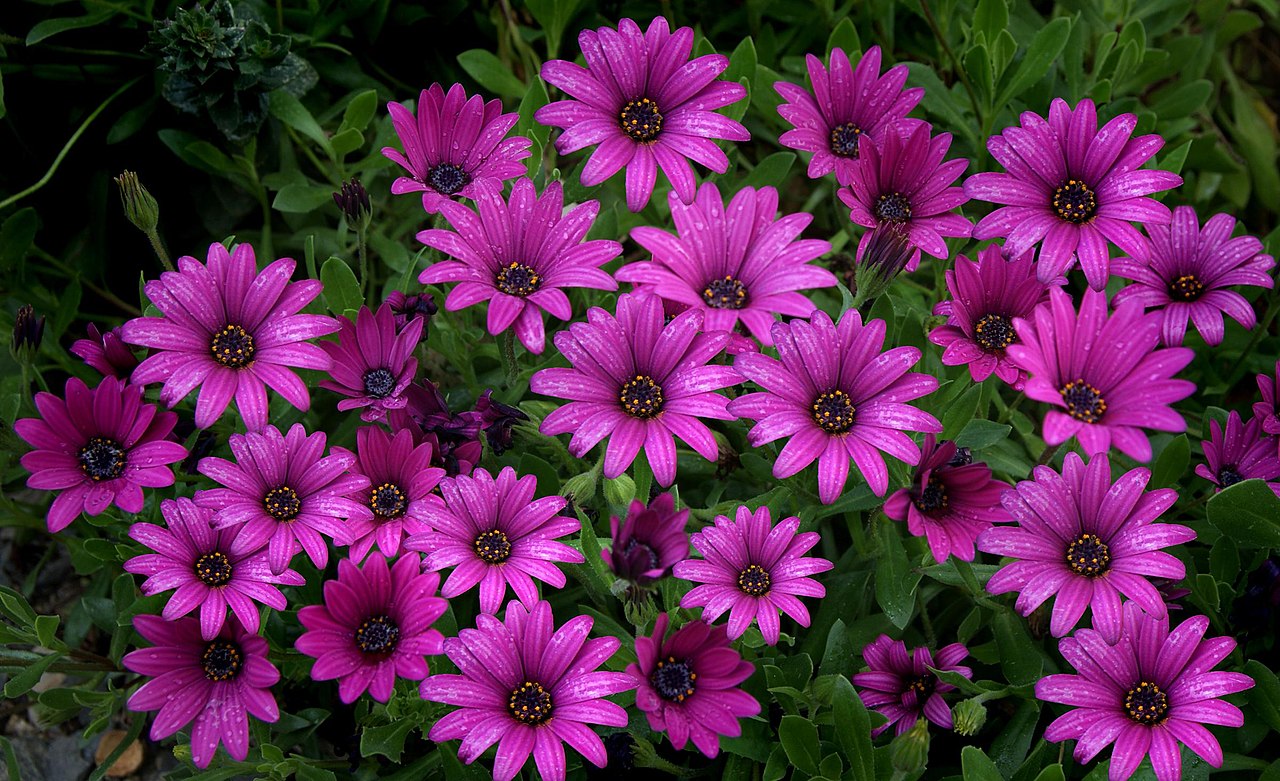
If the name of osteospermum It does not sound familiar to you, maybe the one with African margarita does. Previously they were included within the genus of the Dimorphoteca, and consequently one of the names by which these plants are known is dimorfoteca, although today it is wrong.
Our protagonists, unlike the oysters we have mentioned, are lively plants, that is, they live for several years. Therefore, they are excellent for gardens, balconies and terraces found in the temperate and warm regions of the world. Do you want to know them better? Let's go there.
Origin and characteristics of the Osteospermum
It is a botanical genus made up of about 85 species belonging to the great Asteraceae family, the majority being native to Africa, specifically to the south of the continent. Some are shrubs, but many of them are herbaceous plants or subshrubs, with a height that usually does not exceed 50 centimeters.
The leaves are green, alternate, or rarely opposite, lanceolate in shape, and the margin usually entire. They bloom during spring and summer, producing daisy-shaped flowers of various colors: white, cream, pink, purple, yellow or mauve.
Main species
The most popular are the following:
Osteospermum ecklonis
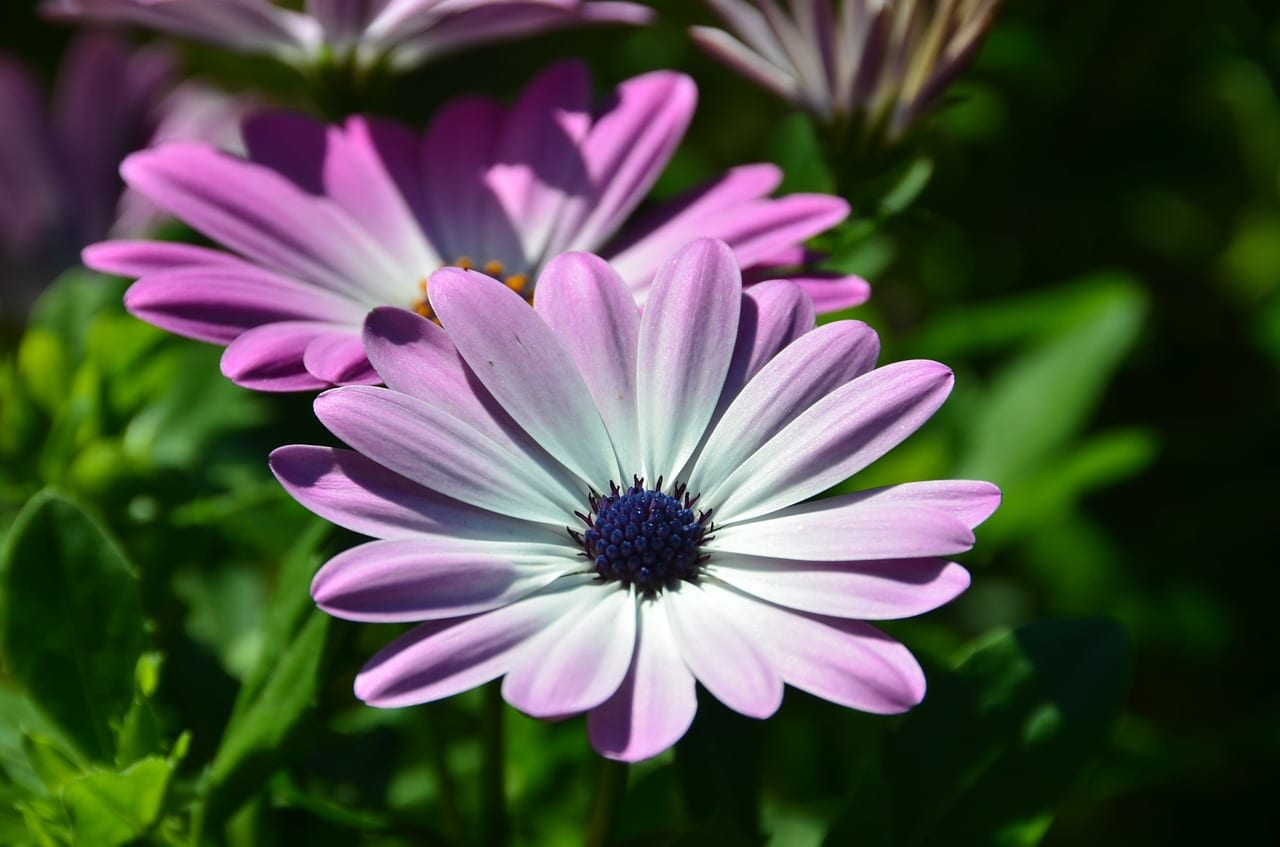
It is the best known and most cultivated. Known as Pole Star, Cape Daisy, or Cape Marigold, it is a herbaceous perennial (or annual if the weather is cold in winter) that can reach a height of up to 1 meter. The leaves are oval and stormy, and its flowers appear in spring and summer.
Resists up to -5ºC.
Osteospermum fruticosum
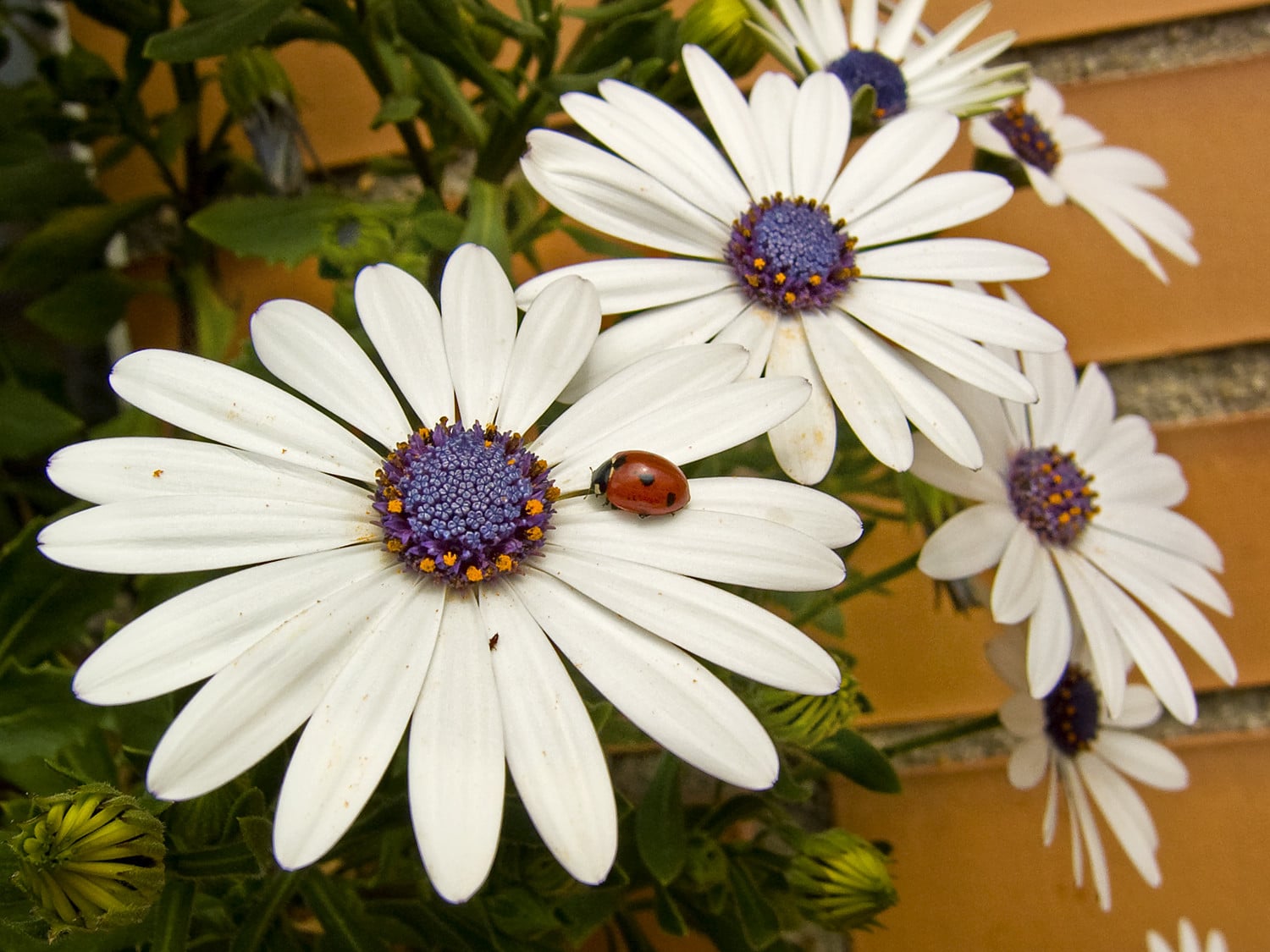
Image - Flickr / Fuentedelateja
It is known as the African daisy or bush daisy, and it is a subshrub that grows to a maximum height of 30 centimeters, although it can extend between 1,2 and 1,8 meters. The flowers bloom in spring, and are deep purple to white.
Resists up to -4ºC.
What are the care they require?
If you dare to have a copy, we recommend that you provide it with the following care:
Climate
The Osteospermum they are native plants of places where the climate is warm in summer and mild in winter. For this reason, if we want to have them outside all year round, the annual minimum temperature should not be lower than -4 or -5ºC, and even so it is preferable that there are no frosts or that they are weaker.
Location
Its most suitable location is outdoors, in full sun. They are plants that need a lot of light to be able to grow in conditions, as well as to produce a large number of flowers every year.
Earth
- Flower pot: fill with universal substrate mixed with perlite in equal parts.
- Garden: Osteospermum are not demanding, but they prefer soils rich in organic matter and with good drainage. If the soil in your garden is not like that, you don't have to worry: just make a hole of about 50 x 50cm, fill it with the mixture of substrates mentioned before and plant your flowers there.
Irrigation
Moderate to low. During the summer it will be necessary to water 3-4 times a week, but the rest of the year 2 times / week or less can be more than enough.
In addition, in the case of growing them in the garden, from the second year it will be enough that you water it 1 or 2 times a week as long as a minimum of 350mm of precipitation falls per year.
Subscriber
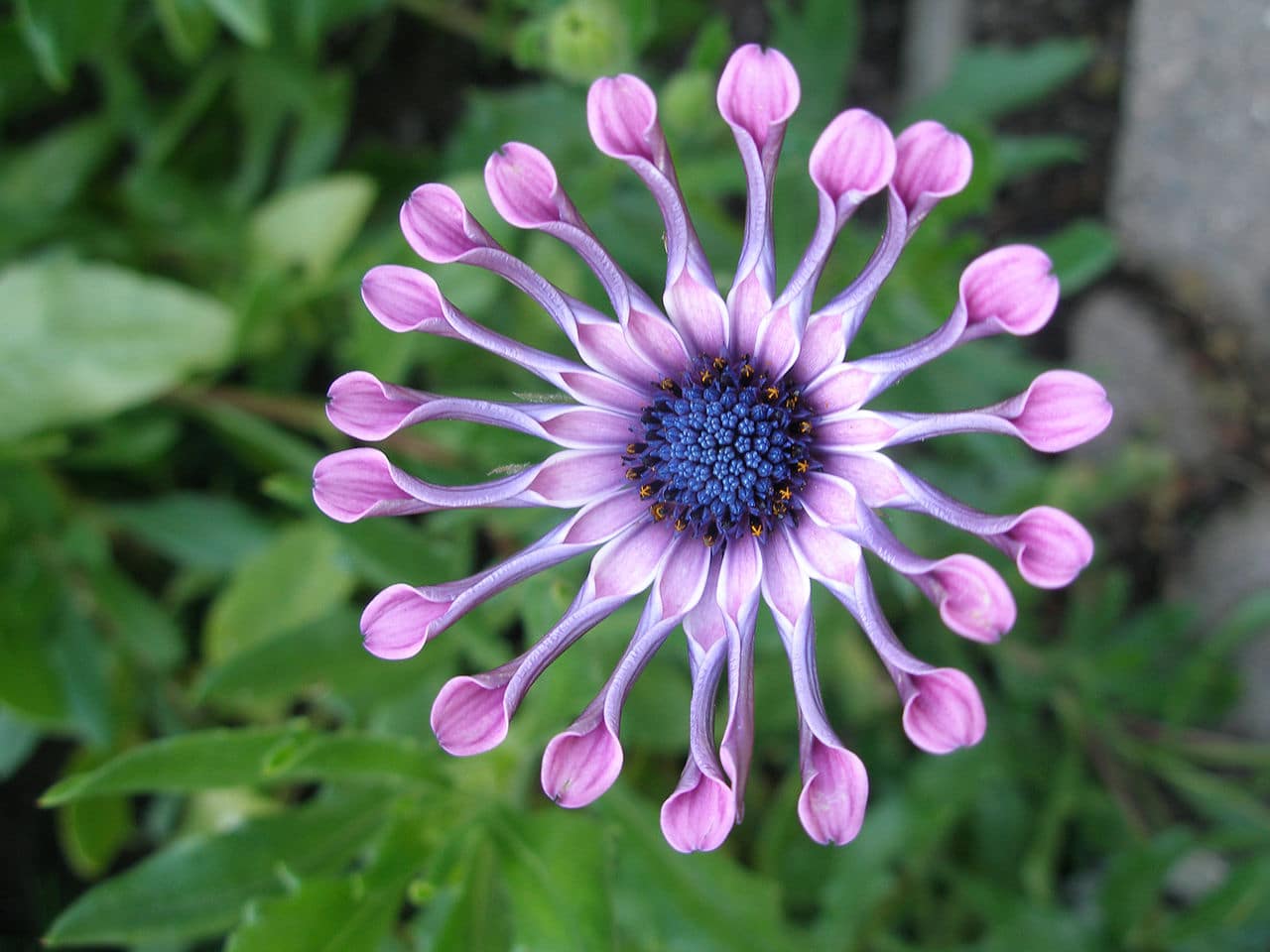
Image - Wikimedia / Thom Quine
From early spring to late summer It is advisable to pay them with organic fertilizers, such as guano or mulch.
You can also use liquid chemical fertilizers, which are already ready to use, such as the universal one for plants or one for flowers, following the instructions specified on the package.
Multiplication
Osteospermum multiply by seeds and cuttings in early spring:
Seeds
The seeds it is advisable to sow them in seedling trays or pots, with universal substrate. It is necessary to ensure that they are not piled up, since it is most likely that all or almost all will germinate.
Cover them with a thin layer of substrate, water, and keep them outside, in semi-shade.
They will germinate in about 10-15 days.
Cuttings
To multiply the African daisy by cuttings you have to cut tender stems that measure about 10cm, impregnate the base with homemade rooting agents and finally plant them in pots with substrate.
If all goes well, they will root in about 20 days.
Pruning
Late winter Stems that are growing too much must be removed, as well as those that are dry, broken or weak.
Plagues and diseases
They do not usually have them, but in dry and very hot environments they can be affected by a mealybug.
Planting or transplanting time
En spring, when the risk of frost has passed.
Rusticity
The Osteospermum resist weak frosts, up to -4 or -5ºC, but they prefer (milder) climates.
What are they used for?
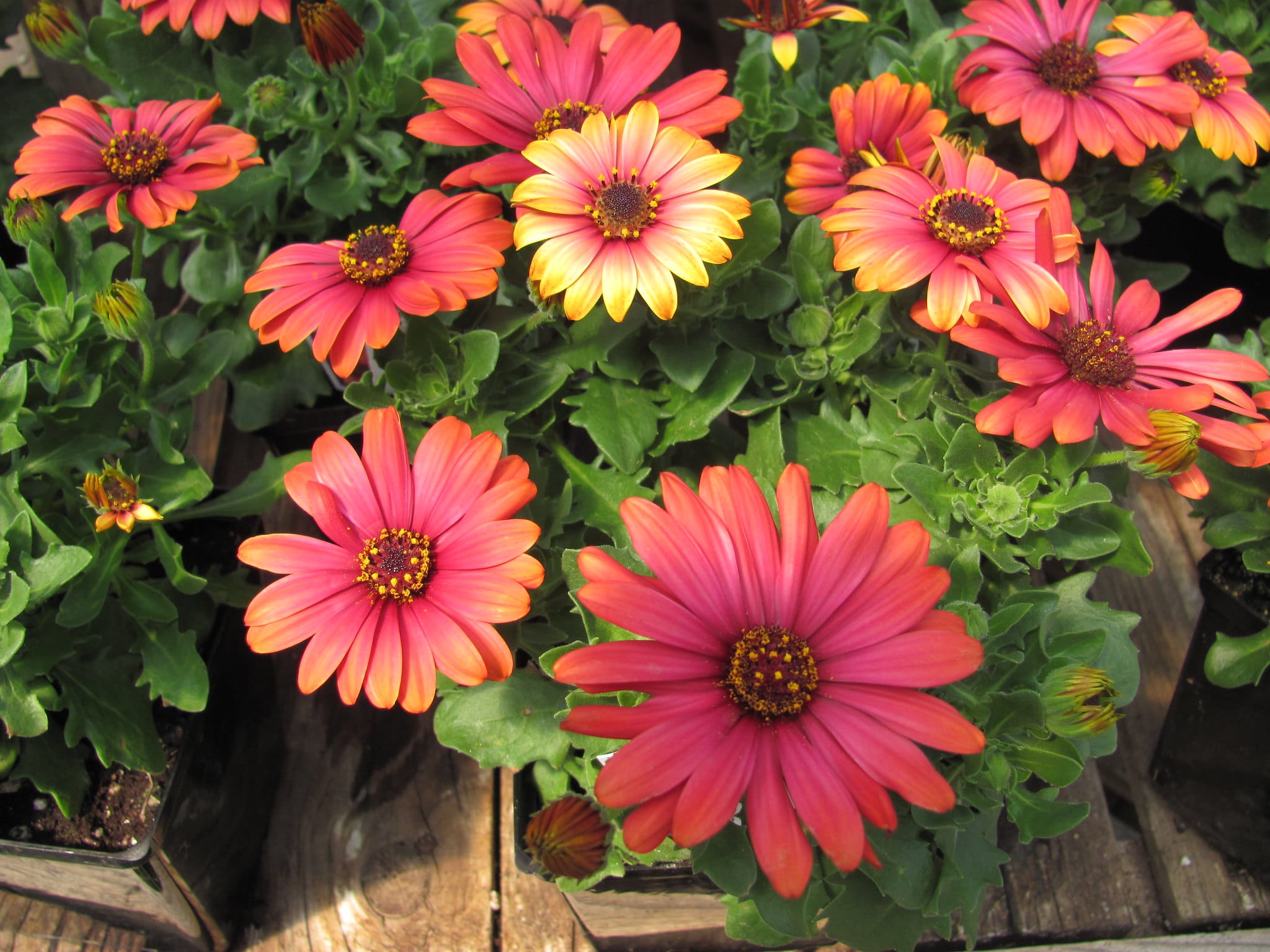
Image - Flickr / Serres Fortier
They are plants with great ornamental value. They are used to decorate balconies, terraces, patios, and also in gardens are very good as coverings or upholstery.
You have someone?